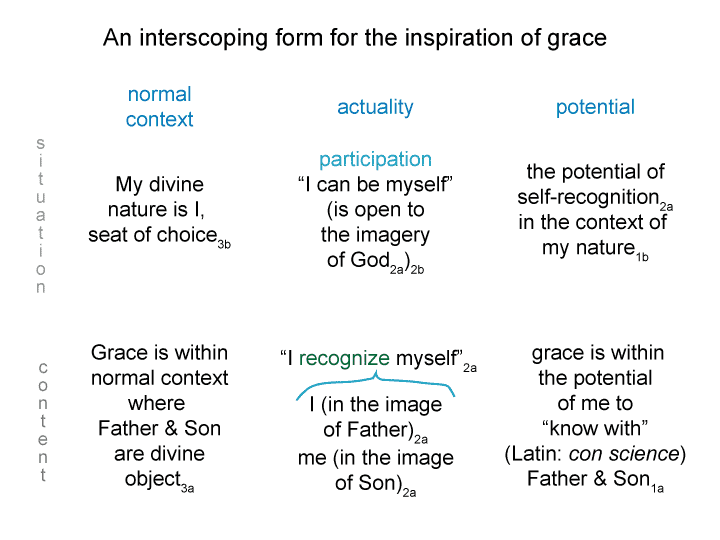Man and Sin by Piet Schoonenberg (1964) 2.2 DE-2
[For me, the situation level of the interscoping form for sensible construction contributes to the horizontal level of an intersection. The content level contributes to the vertical level of an intersection.
Participation occupies the horizontal (or hidden) axis.
Recognition occupies the vertical (visible) axis.
One single actuality accounts for the union of two actualities.
The single actuality is ‘the state of grace’ or ‘the state of self-destruction’.
In practice, the nested form containing this single actuality should not interscope with lower levels. It may interscope with higher levels. It usually belongs to the content level of an interscope.]


